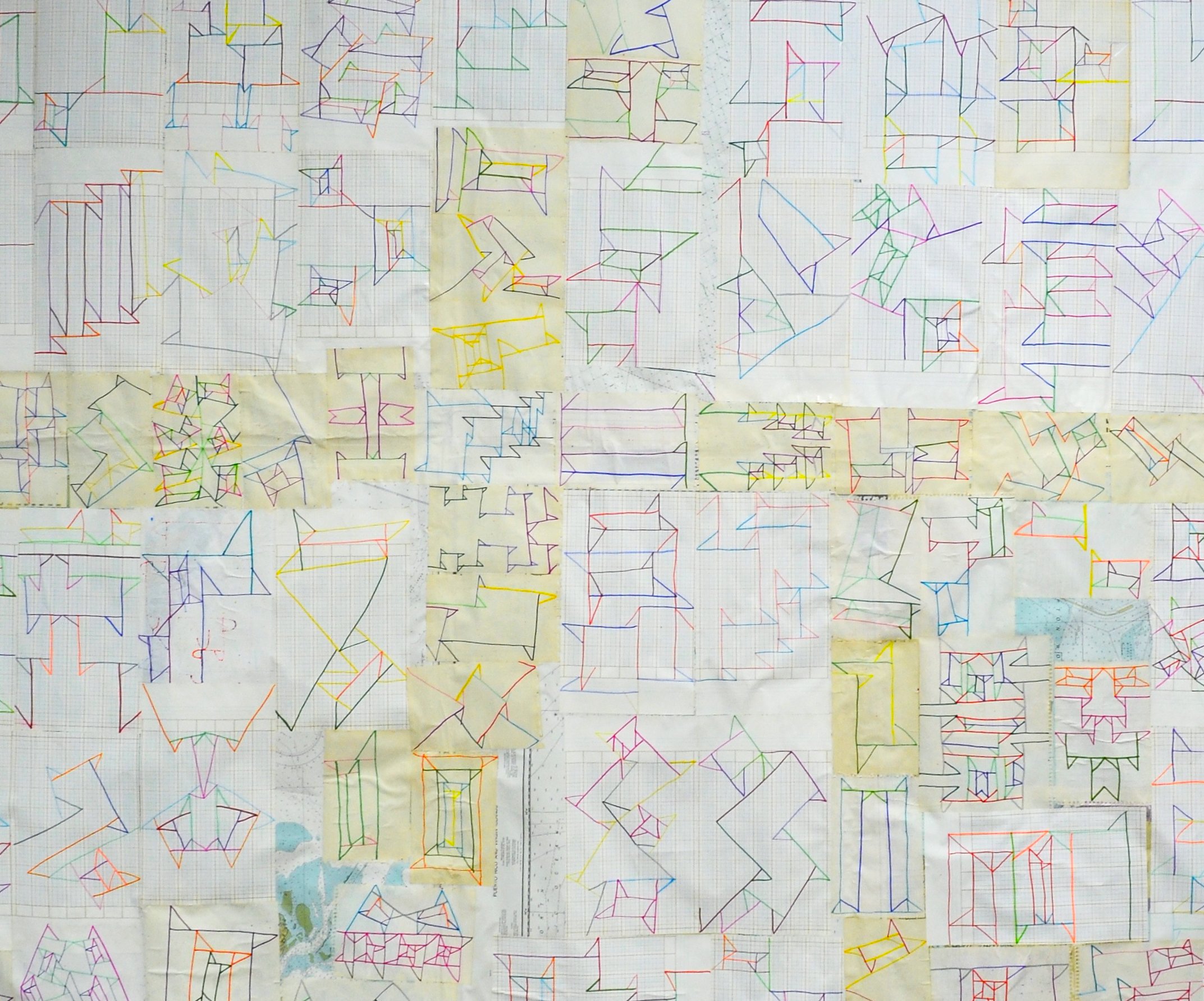
-
Alternating between painting, drawing, collage, sculpture, installation, and performance, Mark Creegan’s art practice explores a diverse array of formal, material, and conceptual positions. Tennis racquets, used watercolor sets, and hair combs are just some of the disparate objects Creegan factors into paintings, minimalist wall arrangements, or large-scale installations. This multi-faceted approach is unified by a thoughtful probing of abstract form and painting discourse, of personal and cultural attitudes about color, and of the effect of “the multiple” deployment of the found object.
-
Throughout the course of my life, my two main passions and career pursuits have been tennis and art. As David Foster Wallace noted about tennis and writing, I have often seen an analogous relationship between the two in terms of physical and mental activity. Both involve strategy, hand/eye coordination, and stamina. And, more importantly, both are essentially solo pursuits demanding life-long, extensive self-reflection.
In these works, I use tennis racquets as material supports for paint. They are constructed either as single, erect, bust-like structures, or combined into figures enacting athletic poses. The racquet acts as a stand-in for the frame and inherent grid of a canvas. This correlation works in reverse as well as the thicket of painterly moves or “strokes” work as visual metaphor for the forehand, backhand, volley, etc. “Standing” refers to the effect of viewing the sculptures side-on and their resemblance to the standing figures of Giacometti.
-
The various paintings and installations that utilize the watercolor set components (the replacement pans, tray holders, and cases), are all used material from elementary school classrooms. I am interested in the fact that these items were once used within a context outside of the usual high-art arena and retain the remnants of art-making activities that I was not involved in. The replacement pans are especially evocative of all the tropes of painting including color, the monochrome, and the oval frame. I treat these materials as modular elements in various minimalist configurations or part of more complex mixed media arrangements.
Akin to these are the various works using the used paint can labels and paint rollers. These also retain remnants of painterly activities that are outside of a high-art context and display painterly surfaces and color that I had no part in creating. I find it interesting to re-purpose these into uncanny works that reference painting as art (the drip, the textured mark, etc).
-
The process of making these paintings involves the following:
1- stapling to one side of a small canvas a textured fabric (burlap, monk's cloth etc.)
2- using various sharp tools to cut into and break up some of the weave of the fabric
3- applying paint to the canvas and covering wet paint with the textured fabric (staple the 3 other sides) this makes a "paint sandwich"
4- while the paint is still wet, push the paint through the fabric
5- let dry
6- apply paint to surface for however long it takes to arrive at something decent
7- name the painting based on the the first letters of the first three colors from the top left corner using the first words that come to mind, for example, if the colors are yellow, maroon, and black then the title could be "Yazidi Mayonnaise Bollocks"
-
This series began in 2010 as a routine relaxation/ decompressing drawing activity where I would repeat the same two marks, the check mark and the hook, in linear drawings using colored pens onto old notebook and ledger paper that I had collected over many years. Each drawing is developed quickly and intuitively with random color choices but using a system of composition that regularizes how each mark stems from another. As these drawings began to accumulate, it seemed natural for me to utilize them as material in some form of collaged artworks. The resulting large-scale tapestry-like accumulations became part of even larger room-sized installations.
As the work progressed, a distinct narrative began to reveal itself in installations that used business office items like clipboards, dry-erase boards, file cabinets, and desks. The check- mark connotes regulatory-like precision and are often displayed strewn from clipboards. The hook marks seem to convey a looser, equivocal nature and are usually splayed out of unkempt file cabinets.
The latest iteration of this series is a performative piece using the materials to make an “office” where I enact repetitive and absurd actions related to work, boredom, and the madness of our social roles.
-
Dopey-Formalism is…
Slouchy shapes hugging each other
Ends have been blunted so they are not dangerous, like scissors we used in kindergarten
Hard-ish edges. They try okay!?
Shapes that mock each other, but then make up.
Each color is filtered through 1970s nostalgia
-